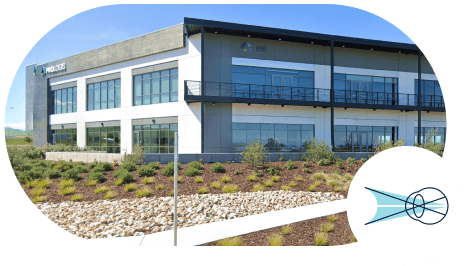Age-Related Macular Degeneration: Debunking Common Myths and Misconceptions

In recent times, the prevalence of age-related macular degeneration (AMD) has surged, making it a condition well-known among older individuals. AMD, a degenerative ailment, inevitably erodes central vision, posing a significant threat to the affected individuals. However, if detected in its early stages, monitoring and treatment options provided by a retina specialist can potentially preserve vision. To dispel common misconceptions about AMD, this article aims to debunk widespread myths and misconceptions about age-related macular degeneration.
Myth #1: Age-Related Macular Degeneration Is Rare
Among people over 50, AMD ranks as the primary vision loss cause, affecting up to 9.4% of all US adults. A 2022 study, The Prevalence of Age-Related Macular Degeneration in the United States In 2019, showed that an estimated 19.83 million Americans had some form, roughly more than 2.75 times that of previous estimates.
About 90% of AMD patients have the early dry form of AMD, in which drusen, small yellow deposits, slowly form underneath the retina, damaging sensitive tissues. Roughly 10% have wet AMD, in which abnormal blood vessels form under the retina, leaking blood and other fluids into the macular area, causing rapid, severe vision damage.
Myth #2: AMD Has No Symptoms
Although the earliest stages of dry AMD may present without noticeable symptoms, vision problems become more likely as time goes on, as AMD is a progressive condition. In later stages, patients with AMD can experience other central vision issues, such as difficulty reading or recognizing faces. Early wet AMD symptoms may include straight lines appearing crooked or wavy, and a loss of central vision, making details blurry. You may also see blind spots in an image’s center while its outside perimeter is clearly seen.
Myth #3: You Can’t Prevent AMD From Worsening
You can slow and reduce AMD progression by getting regular eye exams and taking medications as prescribed. You can also manage related risk factors by following a healthy lifestyle, including:
- Consuming a diet (leafy green vegetables, lean proteins, fish, citrus fruits, etc.)
- Maintaining a healthy weight
- Avoiding smoking
- Shielding your eyes from ultraviolet (UV) light with sunglasses
- Maintaining healthy blood pressure and cholesterol levels
- Exercising regularly
Depending on your unique circumstances, your doctor may recommend daily nutritional supplements, particularly those in the Age-Related Eye Disease Studies (AREDS and AREDS2) study. These antioxidants may delay AMD progression, preserve vision longer, and benefit overall vision health.
Myth #4: No AMD Treatment Exists
While the main treatment for dry AMD is preventative care, there are now options for individuals experiencing geographic atrophy (an extremely advanced form of dry AMD characterized by retinal cell death) called Syfovre and Izervay. Both Syfovre and Izervay were approved by the US Food and Drug Administration (FDA) in 2023. They both work by inhibiting a part of the immune system known as the complement system, thereby preventing it from causing inflammation and damage to the retinal cells.
For wet AMD, the standard form of care is intravitreal injections of anti-vascular endothelial growth factor (anti-VEGF) medications, which help to stop abnormal blood vessels from forming. Photodynamic and laser therapy, in which medication and light or lasers seal macular blood vessels and prevent leakage, may also be performed.
Separate AMD Truth From Fiction
To better monitor vision and enable earlier detection, diagnosis, and treatment, patients who have AMD or are at risk should understand as much as possible about the condition. Doing so can give you the best chance of preserving your vision for many years to come. To schedule an exam for AMD in Northern California, we encourage you to contact Retinal Consultants Medical Group to discuss your best treatment option.


